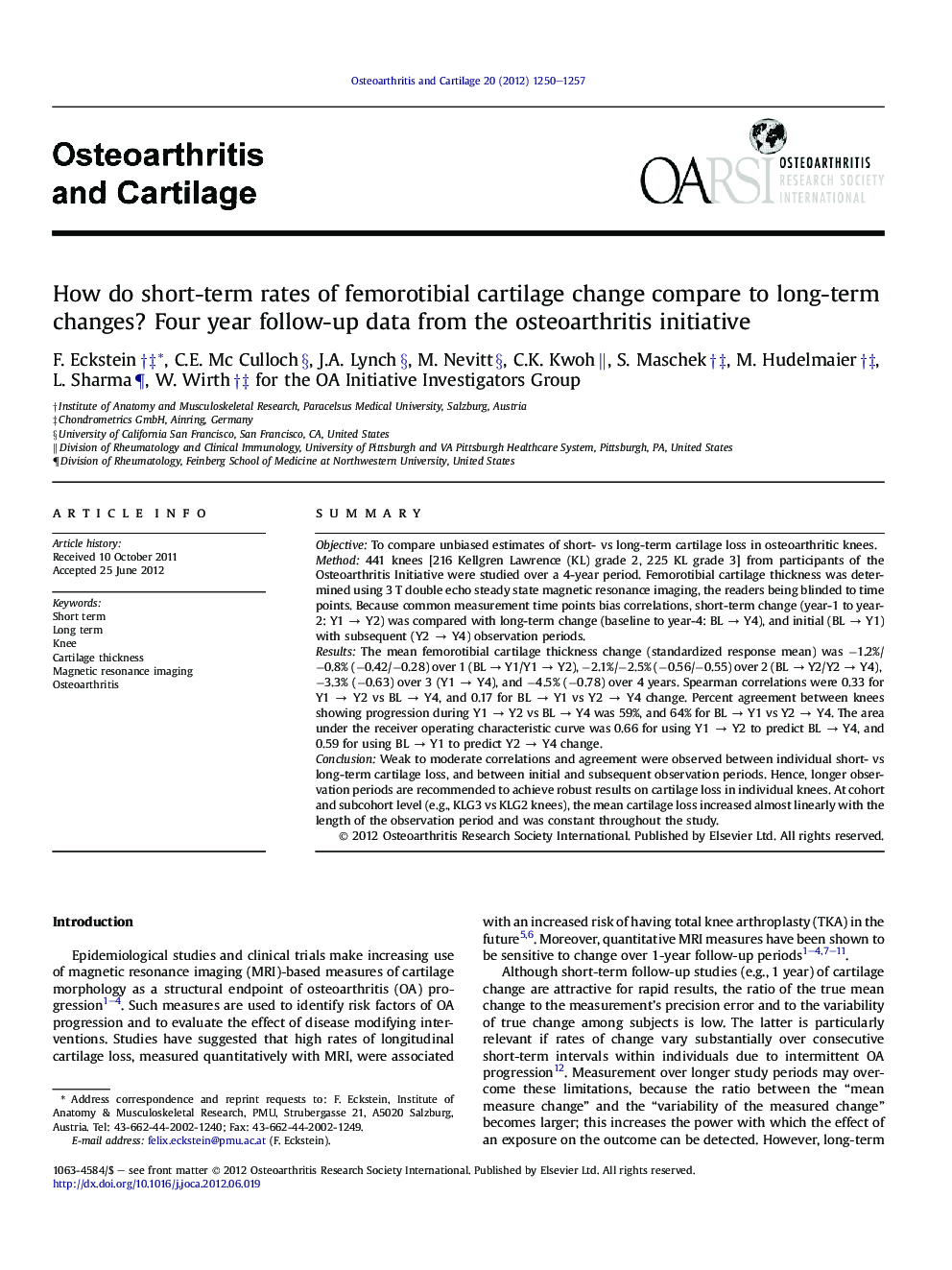| کد مقاله | کد نشریه | سال انتشار | مقاله انگلیسی | نسخه تمام متن |
|---|---|---|---|---|
| 3379897 | 1220186 | 2012 | 8 صفحه PDF | دانلود رایگان |

SummaryObjectiveTo compare unbiased estimates of short- vs long-term cartilage loss in osteoarthritic knees.Method441 knees [216 Kellgren Lawrence (KL) grade 2, 225 KL grade 3] from participants of the Osteoarthritis Initiative were studied over a 4-year period. Femorotibial cartilage thickness was determined using 3 T double echo steady state magnetic resonance imaging, the readers being blinded to time points. Because common measurement time points bias correlations, short-term change (year-1 to year-2: Y1 → Y2) was compared with long-term change (baseline to year-4: BL → Y4), and initial (BL → Y1) with subsequent (Y2 → Y4) observation periods.ResultsThe mean femorotibial cartilage thickness change (standardized response mean) was −1.2%/−0.8% (−0.42/−0.28) over 1 (BL → Y1/Y1 → Y2), −2.1%/−2.5% (−0.56/−0.55) over 2 (BL → Y2/Y2 → Y4), −3.3% (−0.63) over 3 (Y1 → Y4), and −4.5% (−0.78) over 4 years. Spearman correlations were 0.33 for Y1 → Y2 vs BL → Y4, and 0.17 for BL → Y1 vs Y2 → Y4 change. Percent agreement between knees showing progression during Y1 → Y2 vs BL → Y4 was 59%, and 64% for BL → Y1 vs Y2 → Y4. The area under the receiver operating characteristic curve was 0.66 for using Y1 → Y2 to predict BL → Y4, and 0.59 for using BL → Y1 to predict Y2 → Y4 change.ConclusionWeak to moderate correlations and agreement were observed between individual short- vs long-term cartilage loss, and between initial and subsequent observation periods. Hence, longer observation periods are recommended to achieve robust results on cartilage loss in individual knees. At cohort and subcohort level (e.g., KLG3 vs KLG2 knees), the mean cartilage loss increased almost linearly with the length of the observation period and was constant throughout the study.
Journal: Osteoarthritis and Cartilage - Volume 20, Issue 11, November 2012, Pages 1250–1257